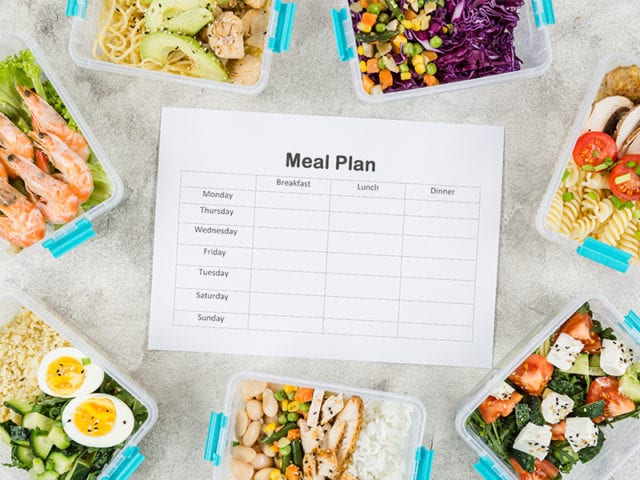If putting on an apron, creating new recipes and feeding your family, friends and guests is your passion, then you can become a tiffin service, food entrepreneur with ease. Several women are talented and skilled in the art of cooking. They love hosting dinner parties and look forward to potluck lunches.
The need and demand for good food are never-ending. A lot of people live away from home for work or education. You can deliver fresh, homemade food, cooked with care, to them. The concept of cloud kitchens encouraged tons of women to deliver their regional specialities or specific cuisines. The model of a tiffin service business is simple and highly lucrative.
This stands true, especially in today’s time where there is a demand for not just delicious, but hygienic food. While the pandemic still exists, people are looking for reliable and credible food sources. The year 2020 has seen a rise in the number of food sector businesses not just popping up but running successfully. So if you are passionate about whipping up delicious food and serving it, you can start your own tiffin service business.
Interesting Fact
Thane-based Lalita Patil, the founder of the restaurant ‘Gharchi Aathvan’, started off as a tiffin service provider in 2016. Today, Lalita’s dream helps her rake in Rs 25 lakh in just 8 months.
How To Set Up A Tiffin Service Business?
The key to running a successful tiffin service is healthy and simple homemade food and nothing fancy. The success of your business venture will depend on having a good reputation and meeting the demands of your customers.
1. Market Research

Before setting any business up, it’s important to conduct thorough research of the market. It helps identify the areas of the sector that have scope and ways in which you can utilise it. For instance, if the demand for home-cooked Mangalorean cuisine is high in your city, you can capitalise on it and provide it. Also, performing an in-depth study of the market will help determine whether to start a regular tiffin service business or cater food occasionally on the weekend.
2. Work Space

An average Indian kitchen is good enough to cook for 50 people. If you have a bigger kitchen or extra space, it’s an added advantage. Additionally, you can convert a small room into an office and use it well. Putting up a packaging station will help avoid chaos. Do thorough planning of what will go where and how to store things. You can buy foldable shelves, hooks to hang utensils and food containers that fit inside each other, helping you save valuable space.
3. Registration & License

The next step is to get a food and safety license from the Food Safety and Standards Authority of India (FSSAI). This, however, applies to businesses making more than 12 lakh. It is important to register your business and obtain a Business License. You need to take a No Objection Certificate from your society/complex. Along with that, you will need to register the name of your venture. Here’s all you need to know about licenses for starting a tiffin service of food in India.
4. Investment

To know how much to invest, you must first know the cost. Plan your meals and calculate the cost of it all. How much does it cost to provide a tiffin with roti, rice, dal, sabzi, and salad along with the cost of packaging? Costs borne by you will include the initial one-time investment and several recurring expenses. Also, you will need to invest in high-quality utensils and other cooking essentials.
5. Recurring Cost

Groceries, employees, cleaning and delivery charges are all recurring expenses. If you provide a tiffin at Rs 100, this should cover all these expenses. For delivery, you need to add extra charges. But make sure to establish a radius for delivery. Even if you do the majority of the cooking, it is wise to hire help. This person can help with prepping the food, cleaning, packaging and much more. Remember to add the cost of gas and electricity.
6. Insurance

Just as we take up life or medical insurance in case something goes wrong, it’s vital to ensure your business as well. As mishap in business is possible, it’s better to safeguard in advance. Connect with a local insurance agent to discuss the best coverage you will likely require.
7. Safety & Hygiene

There is nothing more important than hygiene in today’s times. As a tiffin provider, it becomes paramount to maintain a balance between taste and hygiene. Some of the measures that you can consider are regular pest control, using gloves while packing and cooking and sterilising the kitchen. Along with that, checking the body temperature of everyone who handles the food, using hand sanitiser and soap and wearing masks is mandatory.
8. Meal Plan

An easy way to avoid chaos is to plan your menu for each day of the week. Some people only take up weekdays or exclusively weekends to deliver tiffins. It’s best to chalk a plan, keeping in mind the availability of groceries, the season, the cooking time required and of course your customers’ preferences. There are several ways you can design your menu, like #VeganWednesday or serving one cuisine a day or even letting your customers order from a variety. It all depends on your food and how you anticipate business in your area.
9. Digital Help

The best way to manage your tiffin business is through technology. You can set up an app or website to receive orders and tie up with a delivery service agency for efficient delivery. Also, you can make the best of an array of food delivery apps available in India. The major advantage of going digital is that you have digital data to plan your future decisions and expand your business.
10. Marketing & Advertising

Social media is all you need to showcase your venture and advertise it too. Several business ventures like fashion and jewellery retail businesses run only on social media. Create a brand account, post about your dishes, services and customer testimonials and see the difference. It will help you launch your business without any investment. Remember to keep posting regularly, engage with your audience and enjoy marketing free of cost.
6 Key Tips To Remember
- Getting feedback from clients once a week or once every two weeks will be sufficient for making amends or making small changes.
- Mention the ingredients used to avoid complaints from customers with specific food allergies or restrictions.
- Choose your tiffin packaging wisely and brand it with the name and logo to create a great impression.
- Conduct small menu-tasting sessions and collect this data to plan the meals.
- Do change up the menu regularly to make it more dynamic.
- Offer mini-tasting menus to your regular customers and get that vital feedback.
The food business will continue growing and be lucrative forever. What will set you apart from the competition is the quality of your food, the variety of expertise and the level of engagement with your customers. So let your inner goddess Annapurna take charge and motivate you to start your own tiffin service business. While food and catering businesses have great margins, they aren’t the only low-investment and high-profit business ideas that you can consider.


